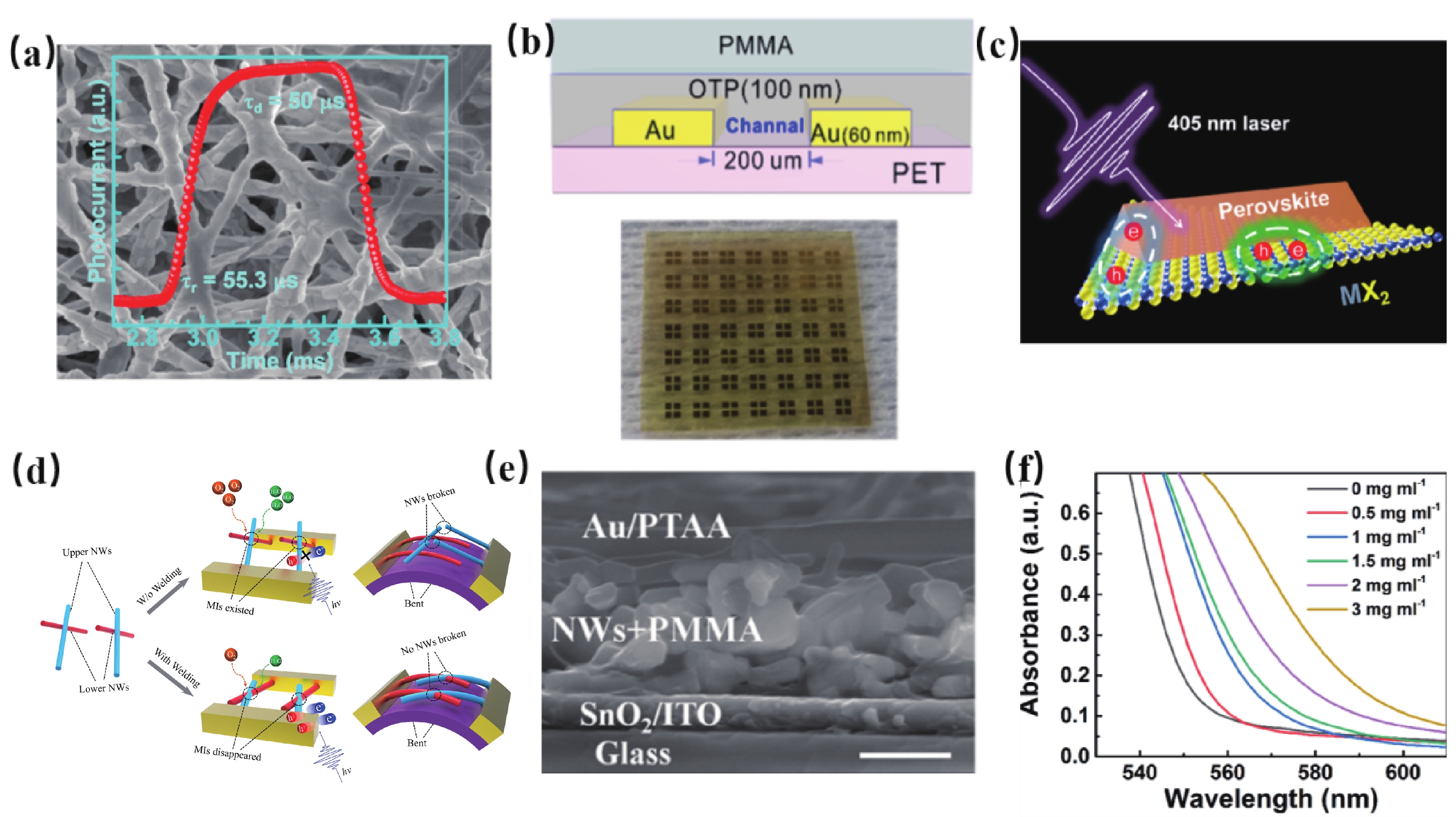| Citation: |
Hai Zhou, Hao Wang, Liming Ding. Perovskite nanowire networks for photodetectors[J]. Journal of Semiconductors, 2021, 42(11): 110202. doi: 10.1088/1674-4926/42/11/110202
H Zhou, H Wang, L M Ding, Perovskite nanowire networks for photodetectors[J]. J. Semicond., 2021, 42(11): 110202. doi: 10.1088/1674-4926/42/11/110202.
Export: BibTex EndNote
|
Perovskite nanowire networks for photodetectors
doi: 10.1088/1674-4926/42/11/110202
More Information-
References
[1] Lin C H, Kang C Y, Wu T Z, et al. Giant optical anisotropy of perovskite nanowire array films. Adv Funct Mater, 2020, 30(14), 1909275 doi: 10.1002/adfm.201909275[2] Pan S, Zou H, Wang A C, et al. Rapid capillary-assisted solution printing of perovskite nanowire arrays enables scalable production of photodetectors. Angew Chem Int Ed, 2020, 59(35), 14942 doi: 10.1002/anie.202004912[3] Zhao Y, Qiu Y, Gao H, et al. Layered-perovskite nanowires with long-range orientational order for ultrasensitive photodetectors. Adv Mater, 2020, 32(9), 1905298 doi: 10.1002/adma.201905298[4] Singh R, Suranagi S R, Yang S J, et al. Enhancing the power conversion efficiency of perovskite solar cells via the controlled growth of perovskite nanowires. Nano Energy, 2018, 51, 192 doi: 10.1016/j.nanoen.2018.06.054[5] Chang C Y, Tsai B C, Lin M Z, et al. An integrated approach towards the fabrication of highly efficient and long-term stable perovskite nanowire solar cells. J Mater Chem A, 2017, 5(43), 22824 doi: 10.1039/C7TA07968K[6] Zhu H, Fu Y, Meng F, et al. Lead halide perovskite nanowire lasers with low lasing thresholds and high quality factors. Nat Mater, 2015, 14(6), 636 doi: 10.1038/nmat4271[7] Waleed A, Tavakoli M M, Gu L, et al. Lead-free perovskite nanowire array photodetectors with drastically improved stability in nanoengineering templates. Nano Lett, 2017, 17(1), 523 doi: 10.1021/acs.nanolett.6b04587[8] Deng W, Huang L, Xu X, et al. Ultrahigh-responsivity photodetectors from perovskite nanowire arrays for sequentially tunable spectral measurement. Nano Lett, 2017, 17(4), 2482 doi: 10.1021/acs.nanolett.7b00166[9] Zeng J, Zhou H, Liu R, et al. Combination of solution-phase process and halide exchange for all-inorganic, highly stable CsPbBr3 perovskite nanowire photodetector. Sci China Mater, 2019, 62(1), 65 doi: 10.1007/s40843-018-9278-6[10] Asuo I M, Gedamu D, Ka I, et al. High-performance pseudo-halide perovskite nanowire networks for stable and fast-response photodetector. Nano Energy, 2018, 51, 324 doi: 10.1016/j.nanoen.2018.06.057[11] Deng H, Yang X, Dong D, et al. Flexible and semitransparent organolead triiodide perovskite network photodetector arrays with high stability. Nano Lett, 2015, 15(12), 7963 doi: 10.1021/acs.nanolett.5b03061[12] Fang Q, Shang Q, Zhao L, et al. Ultrafast charge transfer in perovskite nanowire/2D transition metal dichalcogenide heterostructures. J Phys Chem Lett, 2018, 9(7), 1655 doi: 10.1021/acs.jpclett.8b00260[13] Wu D, Zhou H, Song Z. et al Welding perovskite nanowires for stable, sensitive, flexible photodetectors. ACS Nano, 2020, 14, 2777 doi: 10.1021/acsnano.9b09315[14] Zhou H, Song Z, Grice C R, et al. Self-powered CsPbBr3 nanowire photodetector with a vertical structure. Nano Energy, 2018, 53, 880 doi: 10.1016/j.nanoen.2018.09.040[15] Tang X, Zhou H, Pan X, et al. All-inorganic halide perovskite alloy nanowire network photodetectors with high performance. ACS Appl Mater Interfaces, 2020, 12(4), 4843 doi: 10.1021/acsami.9b21666 -
Proportional views






 DownLoad:
DownLoad:














